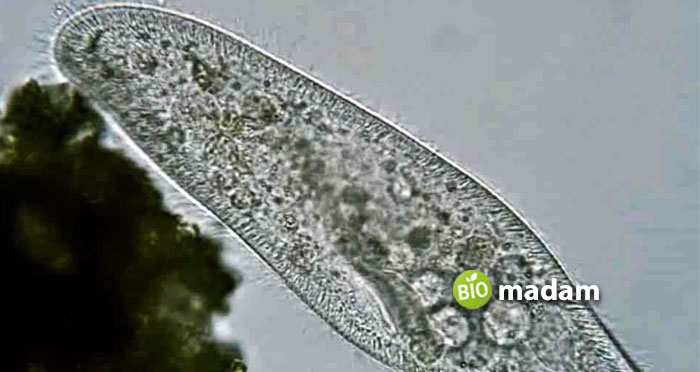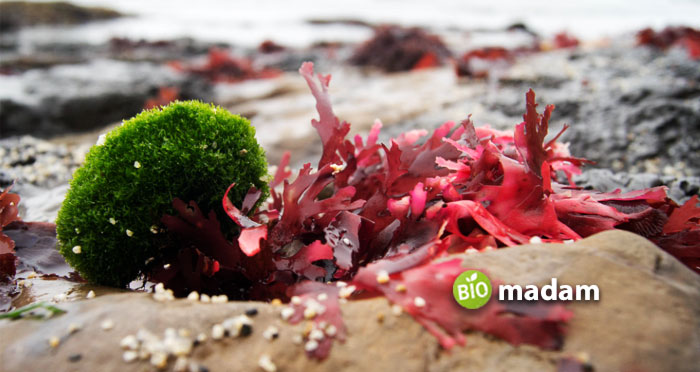Protists are simple, cellular-level organisms that do not have highly specialized tissues and organs, which makes you wonder, “Do protists have a nucleus?”
Yes, protists have a nucleus like all other eukaryotes.
While they are one of the smallest and simplest organisms in the category, they possess a nucleus with DNA in it. Keep reading to know what kind of nucleus protists have and why.
What are Protists?
Protists are eukaryotic organisms that are not animals, plants, or fungi but possess similar characteristics. They defy the basic criteria of labeling living organisms and have some characteristics of other living organisms. Some protists resemble plants, while others resemble fungi or animals more.
Protists cannot be categorized into other kingdoms as they are unicellular eukaryotes, while fungi, plants, and animals are multicellular.
The categorization of protists includes:
Animal-like protists: They are heterotrophs and exhibit locomotion
Plant-like protists: They have chlorophyll in their cells that helps converts solar energy to chemical energy
Fungi-like protists: Protists with fungi-like qualities are heterotrophs, contain cell walls, and reproduce through spore formation.

Do Protists have a Nucleus?
Yes, protists are eukaryotes, and all eukaryotic cells have a nucleus and other membrane-bound organelles. The nucleus contains the DNA of the cell. Some protists are uninucleated, while others are multinucleated.
The Function of the Nucleus in Protists
The Protistic nucleus contains the organism’s DNA, which is the hereditary material and helps in reproduction. The double-membrane bound nucleus protects the chromatin and other organelles within the nucleus.
Abiogenetic Reproduction
Protists typically undergo abiogenic reproduction, which does not involve two parents. The parent cell forms two daughter cells which share the parent’s genetic information. These organisms exhibit different types of abiogenic reproduction methods, including multiple fission, binary fission, and budding. Others include:
- Spore formation
- Plasmotomy
- Fragmentation
Biogenetic Reproduction
Besides abiogenic reproduction, some protists also exhibit biogenic reproduction involving mitosis and meiosis. Each parent cell undergoes meiosis to produce two daughter cells resulting in four daughter cells in total. Fertilization takes place, leading to the production of the fertilized zygote. Sometimes, the parents may unite to exchange their haploid pronuclei to form the zygote nuclei, followed by binary fission to produce daughter cells in conjugation.
Other Organelles in Protists
Protists have most organelles you find in other eukaryotes, including:
- Mitochondria
- Ribosomes
- Smooth and rough endoplasmic reticulum
- Golgi apparatus
- Vacuoles
Some organisms from the kingdom Protista also have organelles that help them in motility, such as flagella and cytoplasm.
Characteristics of Kingdom Protista
Despite the differences in characteristics among organisms in the kingdom Protista, they have some common features:
- Protists can be unicellular or multicellular, though most of them are unicellular.
- They contain a true nucleus and other membrane-bound organelles.
- They exhibit locomotion through locomotory organs such as cilia and flagella or cytoplasm.
- These organisms reproduce through sexual and asexual reproduction; sexual reproduction is rare and typically occurs during stressful times.
- Protists may be autotrophic or heterotrophic, depending if they resemble plants or animals. Autotrophic protists can produce their own food, while heterotrophic protists feed on other organisms.
- They usually live in moist and damp areas such as ponds, lakes, or soil with moisture.
- These organisms often act as parasites for humans, leading to various infections and diseases.
- Protists exhibit symbiosis to survive in the environment.

Characteristics of Plant-like Protists
Plant-like protists resemble plants more than other eukaryotic animals. They have the following characteristics:
- These organisms have chloroplasts and are capable of producing chemical energy from sunlight.
- Their chloroplast contains pyrenoids that have CO2 fixed in them.
- Plant-like protists may be unicellular or multicellular.
- They move with the help of a flagellum.
- They reproduce through biogenetic and abiogenetic reproduction.
- Some protists may have gametangia to produce and store their gametes.
- These organisms live in rivers, ponds, oceans, and other wetlands.
- They do not have roots, leaves, or stems like plants.
- Examples of plant-like protists include different classes of algae, like green algae, red algae, diatoms, and euglenoids.
Characteristics of Animal-like Protists
Animal-like protists do not have chlorophyll and possess characteristics of animals more closely.
- They are heterotrophic and incapable of producing their food.
- They move and find their food, preying on other organisms.
- Animal-like protists have locomotory organelles such as flagella and cilia; some organisms, like amoeba, use cytoplasm to move forward.
- These organisms are single-celled.
Protists that resemble animals include sporozoans, amoeba, ciliates, and flagellates.
The Bottom Line
The answer to “Do protists have a nucleus,” is “Yes.” Protists are eukaryotic organisms, and all eukaryotes have a defined nucleus. They also contain other membrane-bound organelles, including ribosomes, Golgi apparatus, endoplasmic reticulum, and mitochondria. Protists are unicellular and cannot be classified into animals, plants, or fungi. However, organisms within the kingdom Protista have characteristics of all these domains. Some are heterotrophs, whereas others are autotrophs; they may also have a cell wall.
FAQs
Why do protists have a nucleus?
The nucleus in protists protects the organism’s DNA which carries the genetic information. It also offers protection to other organelles (if any) within the nucleus.
Do fungi have a nucleus?
Yes, fungi have a nucleus, and some may have two different nuclei at some point during their life cycle.
Does a virus have a nucleus?
Viruses are simple organisms that do not have a nucleus, cytoplasm, or membrane-bound organelles like other organisms. They cannot reproduce on their own and require a living host.
Do unicellular protists have a nucleus?
All protists are eukaryotic organisms; thus, all protists, whether unicellular or multicellular, have a nucleus.
Are all protists haploid or diploid?
Not all protists are haploid or diploid; some unicellular protists are haploid, whereas other multicellular protists are diploid. At the same time, a few multicellular protists undergo both states, known as alternation of generation.

Anna has completed her degree in Pharmacy from the University of Hawaii. She is serving as a research assistant in a pharmaceutical company. She had a great interest in writing blogs, traveling to different parts of the US, and trying delicious recipes in her spare time.

